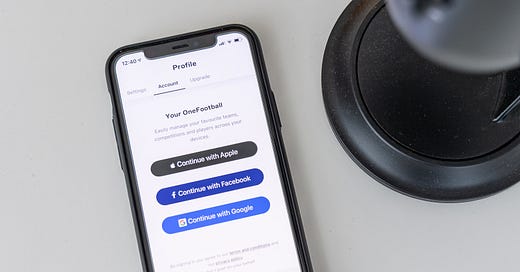Sign-ups vs drop-offs (How to find the perfect balance for an engaged community)
Why are people reaching the sign-up page only to drop off moments later? And can this be a good thing?
Hey 👋
This article is based on this week’s Platforming Community Live.
You can catch our next Platforming Community Live on Thursdays at 11am on LinkedIn and YouTube.
There’s no better feeling than seeing traffic coming to your community sign-up page.
After all your hard work researching and targeting your ideal member, they’ve found you and are interested.
Everything’s going exactly how you hoped, and the process is working!
But what happens when, out of nowhere, that potential sign-up becomes a definite drop-off?
While some drop-off is natural, if it happens repeatedly, then it’s time to discover why.
How to perform a drop-off diagnosis
Over the years, we’ve been asked by many community leaders why their drop-off rate is high.
We typically find it lies in two places:
Identify if there’s a misalignment of expectations
Before you can figure out why people are leaving your sign-up page, it’s important to think about how they arrived there in the first place.
For many digital communities, traffic to sign-up pages will be the result of social or paid ads.
Now, let’s imagine a person who’s just watched the London 2024 Marathon sees an ad for a running club.
The ad says, ‘Beginners! Start training with us and become a 2025 marathon runner’.
Someone who is a complete beginner and feeling inspired after the recent race thinks, Great - I’d love to run the London 2025 Marathon; sign me up!
Excited to get started, they head to the sign-up page, where they discover they must be able to run a minimum of 5k and meet at a specific location twice a week.
This person has never run before, doesn’t live close to the location, and therefore doesn’t meet the criteria.
This would be considered a misalignment of expectations and is a detrimental cause of drop-offs for online communities.
Check what you’re offering on your ads and compare this with what people see at sign-up.
If it’s not in sync or you’re missing valuable details, make sure you correct it.
The more they align from the start, the more likely members are to continue on the onboarding process!

Check your initial flow
After reviewing your ads, the next step is the sign-up page.
Are you providing the necessary details to become a member?
Are you showcasing the features and benefits of being part of the community?
It’s amazing what a tweak to text, imagery or design can do to improve sign-ups.
Think about it: would a stock image or a platform preview snapshot be more beneficial to a potential member?
A small switch from generic imagery to a sneak-peak of your platform would:
Remove a barrier to entry as people can see what they’ll get for their membership (more sign-ups).
Set clear expectations of what’s included in the membership (fewer drop-offs once they’re in).
Cut the complicated
Your onboarding process should convey the message and value of your community in the simplest way possible.
Ask yourself:
Do people know what they’ll get when they become a member?
Are you asking them for more/less information than is required?
Give potential members the easiest route to a community that provides exactly what you promised it would from the outset.
Why we want some members to drop off
This might seem wrong, but some drop-off is beneficial for your community.
Let’s go back to the running club example.
If someone doesn’t meet the criteria but decides to join the community anyway, they wouldn’t be an active member.
This is because they would feel unable to relate to other members and struggle to get involved.
However, your community stays niche if that person chooses to drop off at the sign-up.
Your community would consist of beginner runners who can run a minimum of 5k and who live within a certain distance of the running club location.
This would give all members a common ground to help, support, and motivate one another, encouraging an engaged community.
Round-up
Pay attention to drop-offs during the initial stages of your community onboarding, especially if they’re frequent.
To improve your community sign-ups and reduce drop-offs, focus on our three-step checklist:
Simple messaging
Highlight the benefits and features
Set expectations from the get-go
When you get these three factors right, not only will you attract the right people, but you will create a community of active members.
Hit reply and let me know if you have any questions or thoughts on onboarding.
Until next time,
Pete






